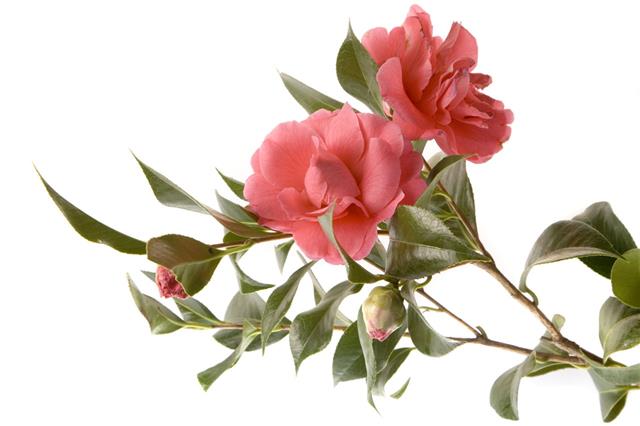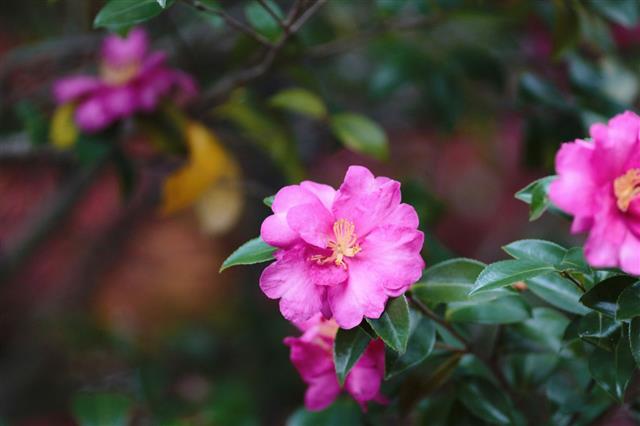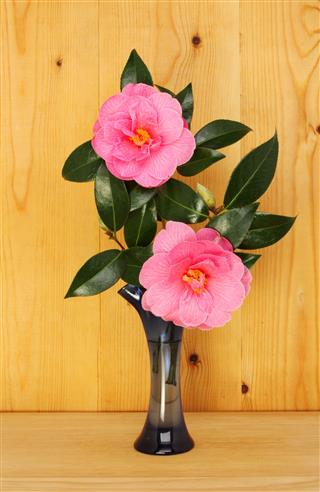
Camellias are perennial flowering plants that can be grown indoors if planted and tended to, in the right way. Follow the tips provided here, to have a healthy camellia as an indoor plant.
Camellias are native to southeast Asia with over hundred species, the most famous among them being the Camellia sinensis, the tea plant! Camellia japonica is the most commonly cultivated tree for its lovely blossoms among the Camellia species. The plant bears green, simple, leaves with a lustrous texture. The flower can be of single, semi-double, or double variety, spotted or striped, and range in hues from white and pink to red.
This species flourishes in soils with a relatively high level of acidity and require a good amount of moisture and relatively cool temperature. Camellias have been grown in Asia for centuries before they were introduced into Europe and America. These plants grow at a rapid rate and have a very long life. People also use the leaves of other species of camellias other than Camellia sinensis to prepare tea.
Planting Camellia
◉ Choose a large pot, ideally one that is at least 14 inches in diameter. Fill it with potting soil, perlite, and pine bark. The soil should have a high acidic content. The pot should have a hole at the bottom to allow drainage. Filling the bottom with a layer of pebbles also helps the soil to drain.
◉ Camellia should not be grown by seeds, since this decreases the chances of the plant blooming. The best way to propagate this variety is by leaf and stem cuttings.
◉ Select a semi-ripe stem from an adult camellia plant and snip it just below the leaf, such that you have a leaf with about an inch of stem. Insert this leaf cutting into the potting mix, making sure the leaf is visible over the soil’s surface. Do not push the leaf all the way down into the soil. Water your newly transplanted cutting deeply, and keep it moist. The ideal time to pot new plants is late winter.
◉ Place the pot in a room that receives the morning sun, and maintain a temperature of 60°F to 65°F. Avoid direct sunlight and excess wind. Too much sun will burn the leaves and wind can cause them to wither and fall away. A room with a south-facing window is best suited for camellias. You should notice the first sprouts germinating by the end of one month.
Watering and Fertilizing
◉ You will need to water the camellia regularly in the hotter months, and lower the frequency in winter.
◉ Maintain the moisture level in the soil, but be careful not to water too often. Waterlogged roots are prone to root rot. If the top layer of the soil feels damp to touch, do not water.
◉ The plant blooms in spring or early winter, so as soon as you see the first buds appearing, fertilize the soil. Fertilizers containing high levels of potassium are an ideal choice. Follow the instructions as specified by the manufacturer carefully when adding the fertilizer. Continue to fertilize till the end of the blooming season.
◉ High levels of humidity are required for the plant to thrive. Lightly spray water on the leaves regularly. If the atmosphere is too dry, place a cool-mist humidifier in the room.
Pruning the Camellia
◉ Pruning encourages the growth of new shoots. Cut the stems using sharp shears, and snip off the stem at an angle near the main branch. Pruning will also give a shape to the plant. Prune after the flowering season has ended. The top of the branches should be snipped off to promote lush new growth, and cutting off the lower branches will ensure they grow straight vertically.
◉ Cutting off buds also encourages bigger blossoms. Snip off the tiny buds that emerge next to the terminal bud to improve the quality of existing and upcoming flowers.
Caring for Your Plant
◉ Camellia often gets affected by fungal diseases, especially petal blight, which causes brown spots on the petals. At the first instance of blight, cut and discard any leaves or flowers with markings and even the ones that have fallen to the ground. Fungal diseases can be prevented if proper ventilation is maintained.
◉ Camellia is prone to several pests, the most common being aphids, scale insects, and mites. Apply insecticides and follow instructions carefully during application.
◉ Do not let the base of the plant get covered with fallen stems and leaves. Do not compost them. Instead, throw them away and cover the area with mulch, taking care not to fully cover the area around the roots. Mulching prevents growth of weeds, protects the roots from intense heat, and retains moisture.
◉ Camellias grow fast, so depending upon the size of your plant and the pot, you may need to repot in a bigger pot every two to three years. Spring is generally the best time for re-potting.
Camellias are hardy plants and if you care for them well, they will thrive indoors. Plants which grow to be very big indoors may need to be replanted into the garden. Make use of the flowers in bouquets, or use them as decorative floating objects in water, where they can last for days. Camellias can be cultivated as bonsai plants too, and clipped to carve out beautiful shapes. Placing camellias in pots around the porch or over the window sills is one of the best ways to adorn your house, and you can even use the leaves of a full-grown plant to brew tea.

















